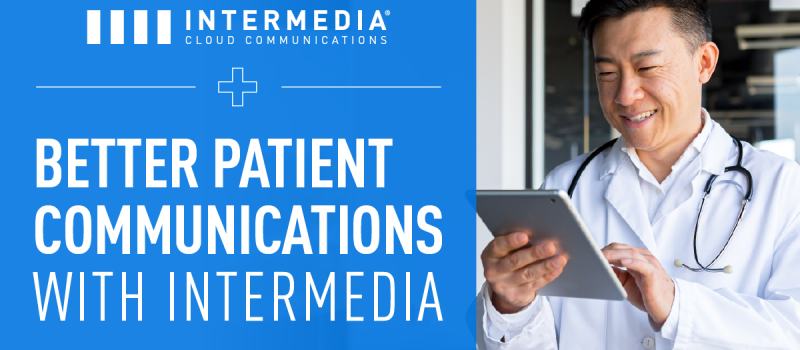Healthcare has never been more reliant on technology—and yet, the cracks are showing. From outdated systems to communication breakdowns, the problems with technology in healthcare are real, persistent, and increasingly costly. While new tools promise efficiency and better patient care, many organizations struggle to keep up with rapid change, maintain compliance, and support staff who are already stretched thin.
In this article, we’ll explore the biggest technology challenges facing healthcare providers today—and what healthcare IT leaders can do to overcome them.
Quick Takeaways
- Fragmented systems and outdated infrastructure continue to disrupt operations and slow down healthcare teams.
- Data security risks and HIPAA compliance challenges grow when communication tools aren’t secure or integrated.
- Poor internal communication leads to inefficiencies, missed information, and delays in care delivery.
- Modern, unified tech stacks reduce the burden on IT teams, streamline workflows, and improve both staff and patient experiences.
The Most Pressing Problems with Technology in Healthcare
Despite major investments in digital health, many healthcare organizations still face foundational tech issues that limit efficiency and care quality.

Fragmented Systems
One of the most persistent problems with technology in healthcare is fragmentation. Systems like EHRs, lab software, imaging tools, and pharmacy databases often operate in silos. Without interoperability, critical patient data can’t flow freely between departments, leading to communication breakdowns and incomplete records.
Outdated Infrastructure
Many healthcare providers still rely on legacy systems that weren’t built to support cloud applications, mobile access, or remote work. These outdated platforms limit innovation and can’t handle the demands of modern clinical or administrative workflows.
Lack of Unified Tools
Clinicians and support staff frequently juggle multiple logins, devices, and disconnected platforms just to perform routine tasks. This patchwork approach drains time, increases the risk of data entry errors, and frustrates teams already under pressure.
The result is lower productivity, more room for mistakes, and a care experience that suffers at every level—from the front desk to patient outcomes.
Data Security and Privacy Risks
With sensitive patient data at stake, even small tech gaps can turn into major security threats. HIPAA compliance is non-negotiable, but disconnected tools and shadow IT make it harder to monitor data flow and maintain control. Cyberattacks like ransomware and phishing schemes have become more common—and more expensive.
Another common problem with technology in healthcare is a lack of built-in safeguards across communication systems. Without secure, encrypted messaging and access controls, providers risk exposing protected health information (PHI). Add in growing regulatory pressure and limited IT resources, and it’s clear why many healthcare teams feel overwhelmed trying to stay secure.
Communication Breakdown Between Teams
Technology is supposed to make communication easier—but in many healthcare settings, it does the opposite. Staff often rely on a patchwork of tools that don’t integrate or support real-time updates. Nurses, doctors, and administrators may be using different platforms entirely, leading to delays, confusion, or even missed care steps.
This kind of disconnect is one of the most overlooked problems with technology in healthcare. Without a unified communication system, teams can’t coordinate efficiently, especially across multiple locations.

Mobile teams and remote care staff are hit hardest, lacking secure tools to collaborate and share critical updates.
Burden on Healthcare IT Teams
Healthcare IT teams are under constant pressure to keep systems running, maintain compliance, and roll out new tech—all with limited staff and shrinking budgets. Managing a growing number of vendors, platforms, and endpoints only adds to the strain.
Many IT departments face ongoing challenges with bandwidth, uptime, and end-user support. When every department has a different tool for communication or scheduling, troubleshooting becomes a full-time job. Instead of driving innovation, IT teams end up stuck maintaining systems that aren’t designed to scale.
Poor Patient Experience from Tech Gaps
When backend systems don’t work together, patients feel the friction. Disconnected scheduling, billing, and care platforms often lead to repeated forms, long wait times, and missed follow-ups. These pain points frustrate patients and strain staff, especially when manual workarounds become the norm.
Problems with technology in healthcare don’t just slow down internal operations—they also damage trust. Limited access to virtual care, inconsistent communication, and unclear next steps can drive patients to look elsewhere for more seamless experiences.
What Healthcare Organizations Need from Their Tech Stack
Solving these problems starts with simplifying the stack. Healthcare organizations need secure, integrated tools that connect teams, automate routine tasks, and reduce the margin for error. Cloud-based systems offer flexibility and scale, but they need to be purpose-built for healthcare’s demands—especially when it comes to security and compliance.
A modern healthcare tech stack should support secure messaging, voice, video, and file sharing—all within a single platform. It should also reduce the burden on IT by offering centralized management, reliable uptime, and intuitive interfaces that don’t require extensive training. Most importantly, it should enable better communication between people—not just between systems.
Fix Communication Today with Intermedia
The problems with technology in healthcare aren’t always about having too little tech. They’re often about having too much of the wrong kind. Disconnected tools, outdated systems, and communication breakdowns are holding teams back and putting patient experiences at risk.
Fixing these issues starts with improving how teams communicate. When healthcare organizations invest in integrated, secure, and scalable communication tools, everything else—from patient outcomes to staff efficiency—can start to improve too.
Looking to modernize your healthcare communications? Explore how Intermedia’s HIPAA-compliant cloud communications platform can help your organization work smarter, stay secure, and improve care coordination.
June 2, 2025
Explore other posts on these topics: Healthcare




